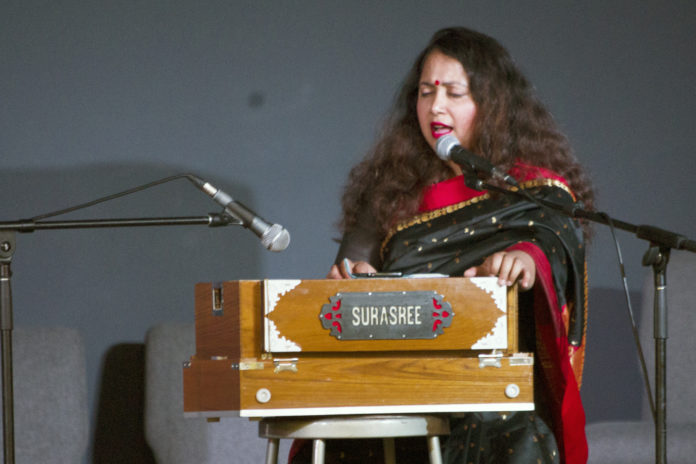
From Southeast Asia to Scandinavia to the United States to Toronto to Saskatchewan, Jebunnessa Chapola has kept her mother language close to her heart.
As a professional singer in her native Bangladesh, Chapola learned to perform a wide variety of classical Bengali songs and dances. When she left home at the age of 23 to study in Sweden and Norway, she took those songs and dances with her. Now that she lives in Saskatoon, she’s working on passing them on to the next generation of performers, a group that includes her two daughters.
It wasn’t what she had in mind when she started teaching, but she’s happy to see it grow.
“I don’t want to say I formed any group,” Chapola said following a performance in Prince Albert. “I used to teach community kids randomly. The intension was to give them some opportunity to keep practicing their language and heritage. Since, in a festival, if you get an invitation, you have to put a name to your group, and that’s the way I started to think.”
The end result was Sargam, a group of singers and dancers would made their first performance in Prince Albert at Culture Days. The name comes from the first musical notes in traditional Indian music. It’s the South Asian equivalent of do-re-mi-fa-so-la-ti-do.
Chapola thought it was a fitting name for a group hoping to proudly represent Bengali culture in Canada.
“I picked it up, just to put a name (to the group),” she explained. “It means that it is a forum and it is a platform to keep alive your own culture and heritage.”
For Chapola, performing isn’t just about entertainment, although she hopes those who listen to and watch their performances will enjoy them. It’s about bridging cultural gaps, social justice and creating spaces for people from minority cultures to share their art.
During her travels, Chapola sometimes struggled to find places where she could teach others about Bengali cultural, while also learning songs and dances from other cultures. Canada, she explained, has been much better in this regard, but there are still challenges. Even with more basic cultural traditions like language, she said there’s a hesitancy to remember or revive them.
“I know a lot of parents in the community (and) I see that they are afraid of teaching their own language,” Chapola explained. “They do not see a future in it. They do not feel the power of it. I would say I became an advocate to teach anyone’s mother language. It is important to be connected to your roots, not matter where you are from.”
Respect for language is very important for Chapola, who speaks passionately about the Language Movement in the former East Bengal. Originally, the area became part of Pakistan following the partition of India in 1947, and later became a hotbed of anti-government protest after laws were passed that made Urdu the sole national language. The majority of the population spoke Bengali. The conflict became one of the inspirations behind the creation of International Mother Language Day.
“They shot bullets and there was a big war, just to protect the mother tongue,” Chapola said. “I believe that today, there are a lot of languages fighting to free themselves and a lot of languages dying everyday. That was also my message I wanted to convey to the audience. Let’s become an ally to protect those languages.”
Those efforts start with Chapola’s own family. Her daughters, who speak fluent English and Bengali, despite only traveling to Bangladesh once, have also taken an interest in learning Cree after an overnight trip to Wanuskewin Heritage Park.
Chapola said it can be expensive to create spaces where children can learn those skills, but that’s where song and dance come in. It may be for only a few minutes, she said, but those minutes have the power to connect people from opposite sides of the world.
“I didn’t want to represent myself and my team as just entertainment artists,” she said. “We brought our stories here. We came here to let people know that we have our own identity and culture and heritage. If we do not know who we are, and if we do not know each other’s story, only with dancing and singing can we convey those messages. You can say that what I tried to do is perform as an activist. That’s what I tried to do.”

